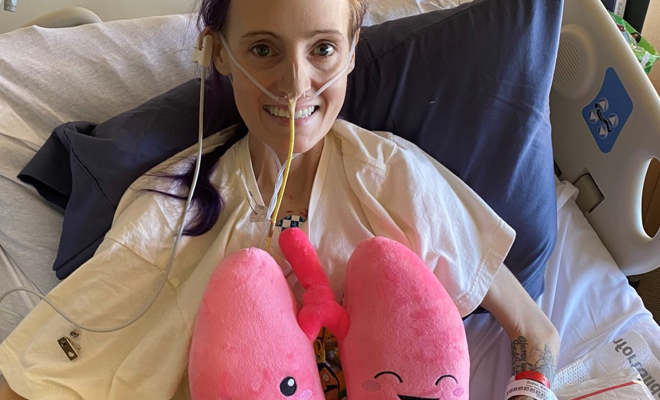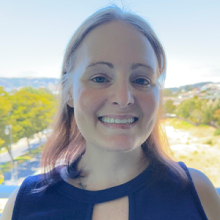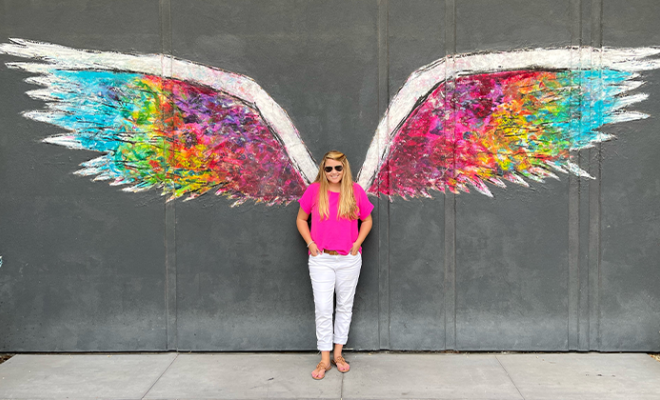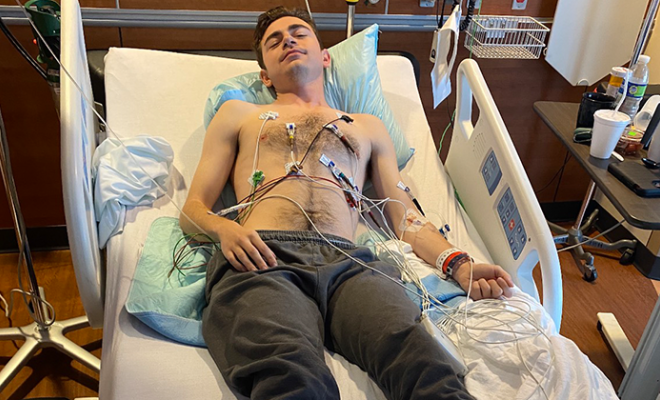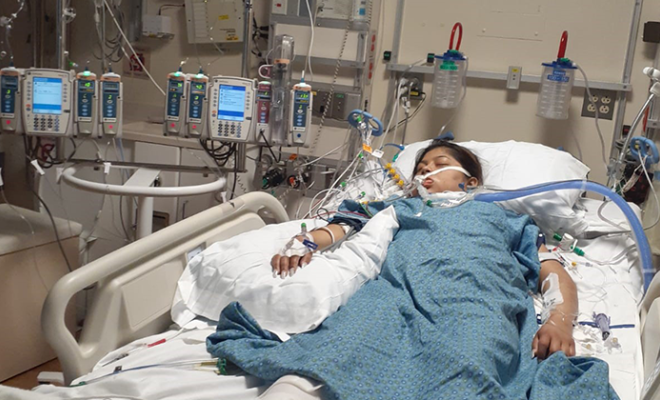Advocating for myself is a major part of managing my life with cystic fibrosis. I sensed how important it was to say “no” to a doctor or push further for answers I wasn’t getting even before I knew to call it self-advocating. What I didn’t know, though, was just how necessary advocating for myself would be, even after receiving double-lung and kidney transplants in 2022. In my mind, as my health improved what would I need to advocate for? It turns out, a lot. And while there were differences between pre-transplant and post-transplant advocating, it still felt the same: tiring and frustrating.
Pre-transplants, while living in end-stage lung disease and kidney failure, I had to advocate to help my failing body. Interventions were made to keep me alive; things were done to my body to slow my disease progression and give me time to find a transplant center that would accept me with the active high-risk infection I had in my native lungs. For example, in summer 2018, with my body struggling to fight this infection, my weight began to fall quickly. It got to a scary point, and I feared for the worst if it kept going at the rate it was. So, I approached my CF care team and advocated that it was time for a gastrostomy-jejunostomy tube (GJ tube) to be placed in my abdomen.
I kept that feeding tube even through my transplants, using it for six months after transplant when they found evidence of aspiration in my native lungs, and I couldn’t eat by mouth for three months. When the time came to have it removed, a typical (and exciting) step after transplant, I found myself back in the cycle of self-advocating. Typically, the stoma that’s left when a feeding tube is taken out heals on its own within a month or so, but that wasn’t my experience. Mine refused to heal at all. Every time I ate or drank, the contents came flowing out of the large hole in my stomach. I quickly became worried about losing weight, becoming dehydrated — already a risk for my transplanted kidney — and contracting an infection in my stomach-acid-burned skin. I needed to advocate, this time in relation to an intervention being undone to my body.
When I discussed my situation and concerns with my transplant team, they didn’t like the idea of surgery. I was advised to keep waiting for my body to heal and, in the meantime, given a referral to the wound clinic. There, I was provided supplies that ultimately proved useless. The leakage was simply too heavy. As the site grew more painful and unmanageable, I knew that this plan wasn’t working. Again, my transplant team told me they didn’t have a recommendation, adding that this was outside the scope of their specialty. Unsettled with that answer, I resorted to the department that removed the GJ tube initially, interventional radiology (IR). Here, after a week of back-and-forth phone calls, I was finally given a referral to a surgeon.
The surgeon’s office was another obstacle. This time, it wasn’t that they couldn’t help, but that I didn’t feel comfortable with the option they gave me. For a reason I don’t know, the surgeon was less than confident that I would do well with the surgery — a partial gastrectomy — while also remarking he would do it, “but only because you’re asking me to.” That, alone, didn’t feel right. If someone is going to operate on my body, I want them to be confident that they should be performing the surgery in the first place, not just doing it because I asked. He also remarked that this particular surgery was my only option for closure, which surprised me after the Googling I had done. Leaving that appointment, I wanted a second opinion.
I tried asking IR for a referral to someone new but hit another dead end. At this point, I was fully on my own. This is how it is advocating for yourself when you have a chronic illness. If you don’t push for your needs, no one else is going to. Had I stopped there, just waited, or quit, who knows what complication I would’ve run into with a leaking hole in my stomach. Luckily, I remembered I’d seen an advanced GI specialist to reposition my feeding tube shortly after my transplants. I immediately felt comfortable with him. His demeanor and quiet confidence were a loud reassurance. In our initial conversation, I found that I did, in fact, have other options. He could perform an endoscopic procedure to resolve what he, by that time, considered a persistent gastrocutaneous fistula (GCF) — an unwanted connection of the stomach with my skin, in this case creating a hole.
While he ultimately provided the care I needed, I was left to reflect on my road up to that point. I was astounded by the amount of advocating I had to do to make someone see that a hole in my stomach was a complication that needed adequate attention.
This is often how it feels to have to advocate for yourself. Getting yourself to where you need to be in the health care system, as a patient and not a medical professional, feels backwards. How is someone with an illness, one that creates little energy or mental capacity for what they’re enduring in the first place, then forced to navigate the labyrinth of health care to have a concern addressed? It’s baffling.
I can’t help but wonder, now, how much of an impact the idea that having a transplant means you’re “better now” had on my experience. If I had still been visibly ill, near death, instead of back to appearing well, off oxygen and on my feet, would things have played out differently? The answer is irrelevant, but I still wonder. I don’t like the notion of going through something to learn a lesson — because most of what we go through with CF doesn’t have a purpose, it just happens. But I did learn this: advocating for my health will never end. With the phases of life CF brings us through, it may take different shapes and lead down different paths, but it’s ever-present. Unlike my leg muscles after my transplants, my self-advocacy muscles have had no chance of atrophying. And regardless of how good I may seem and feel post-transplant, the instances where I encounter the need to flex them are still all too frequent.
Interested in sharing your story? The CF Community Blog wants to hear from you.

